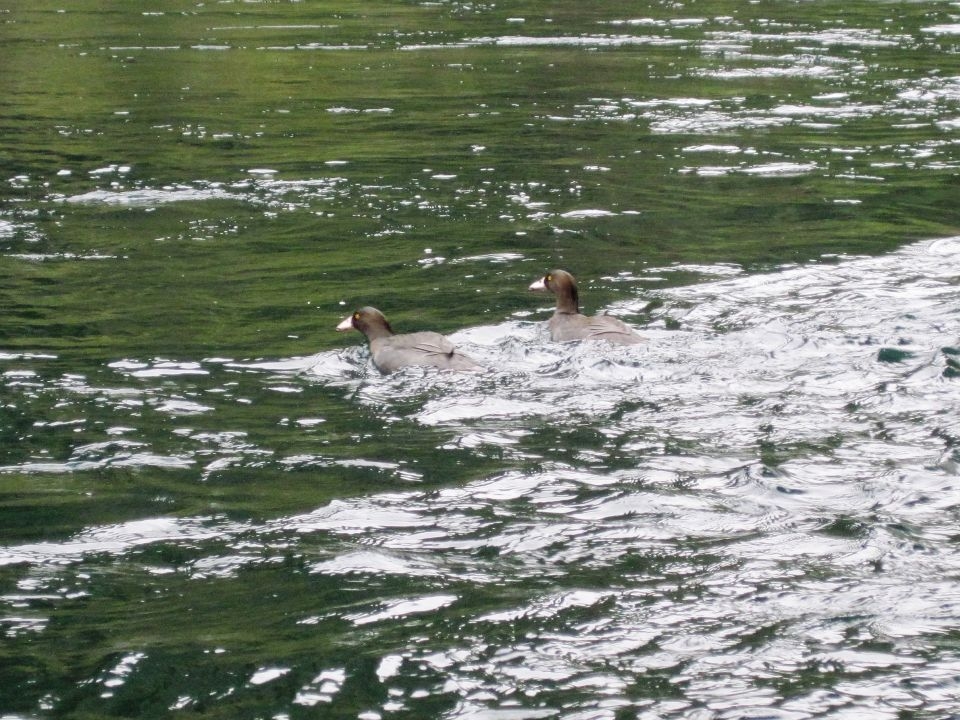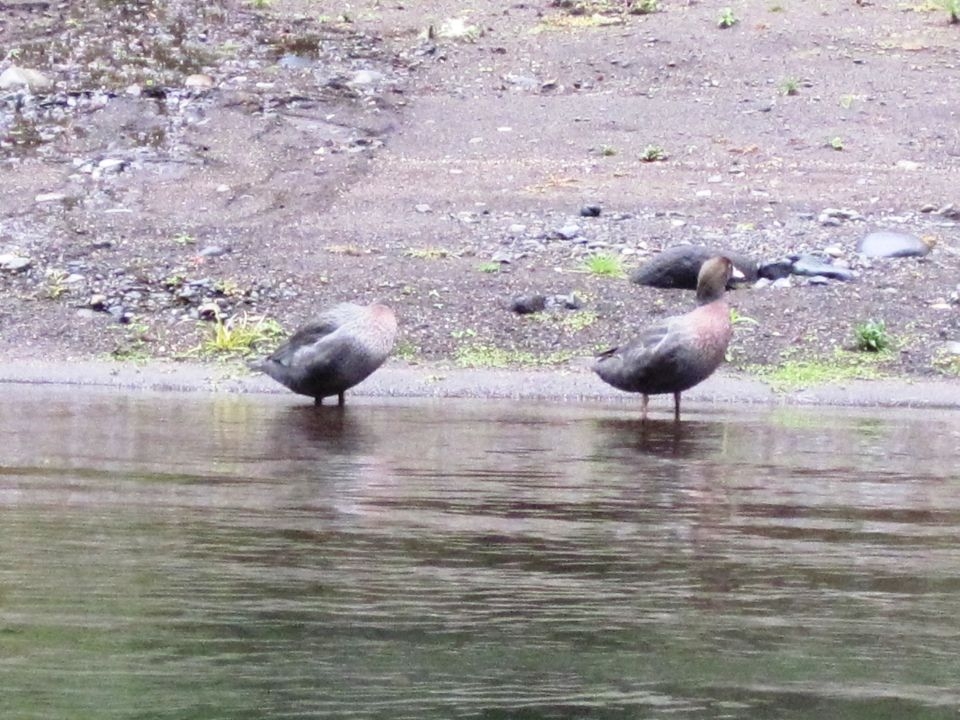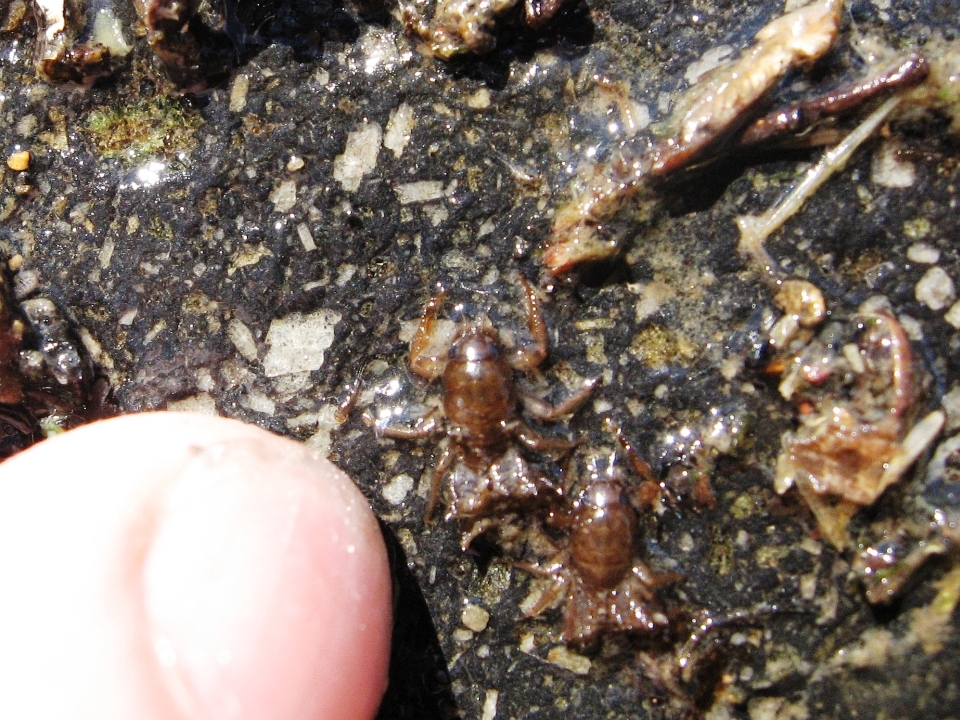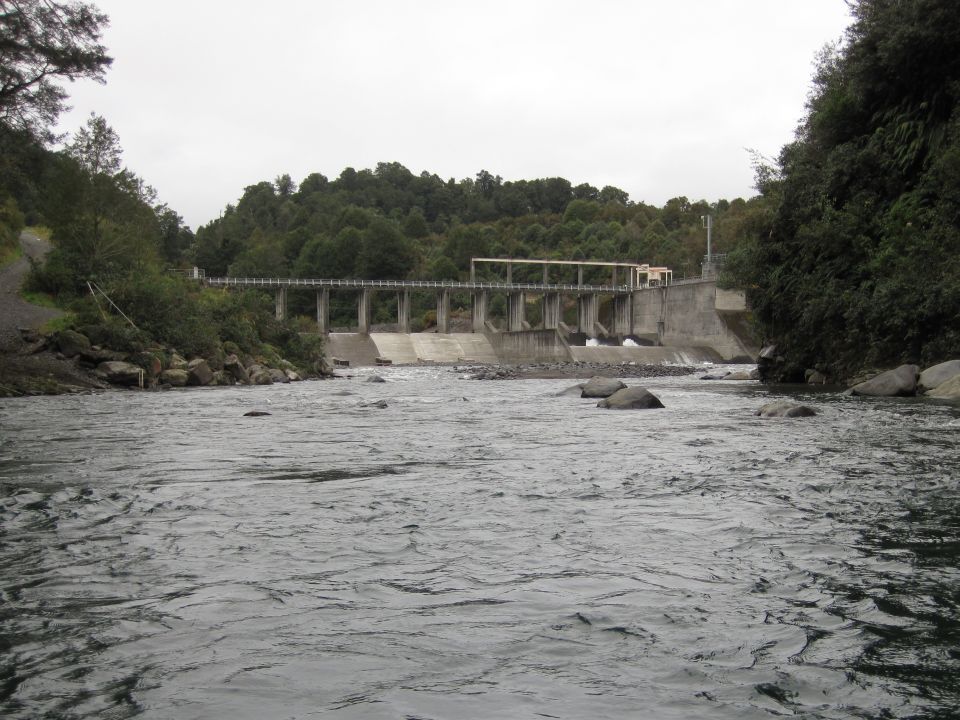Whio habitat
Whio are well adapted to living in and around cold, fast flowing, clean rivers. They usually swim and only fly if disturbed, or patrolling their territory. Whio feed mainly on the larvae of caddisfly, mayfly, stonefly, and on freshwater snails. They breed in forest surrounding the river.
An endangered bird
Whio are now only found in some parts of the North and South Island. Their low breeding success is thought to be due to:
- stoats killing females sitting on nests and eating eggs and chicks
- disturbance or attacks by rats, dogs, cats and possums
- a disappearing habitat by cleared forests and reduced river flow
- certain farming practices that reduce oxygen levels in water and kill off whio's food
- building nests in areas affected by flooding and which are easy for stoats to attack.
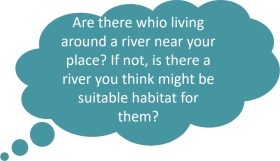
Saving Whio
Whio are one of our most endangered endemic birds. The Department of Conservation has a partnership with Genesis Energy to secure the future of whio. Genesis Energy runs a hydro power station which uses water from the Tongariro River. They make sure enough water keeps flowing downstream for whio. They also provide funding for projects like Whio Forever.

